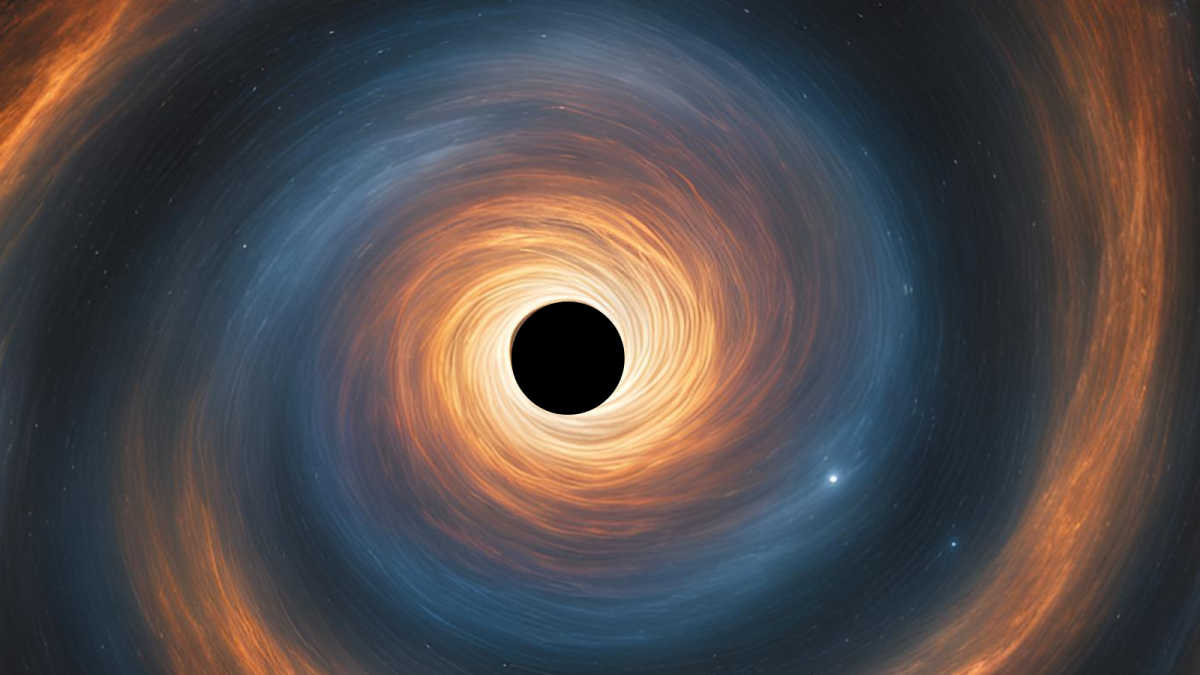Research conducted at Kansas State University (KSU) in the United States has used the latest observational data from NASA’s James Webb Space Telescope (JWST) to once again raise a seemingly incredible – yet very attractive – hypothesis.
The theory is that our own universe may actually exist inside a black hole.
Analysis of the rotation direction of distant galaxies has revealed a “bias” that differs from previous common sense, raising new questions about whether the universe is actually uniform and isotropic.
If we really are living inside a black hole, it is possible that the black hole’s powerful gravity and rotation (spin) determine the distribution of galaxies on a gigantic scale.
This perspective may lead to unexpected solutions to a series of mysteries surrounding the speed of the expansion of the universe (the Hubble constant problem) and the true nature of dark matter, which cosmology has struggled to explain until now.
The researchers said: “The cause of this phenomenon is not yet clear, but there are two main possible explanations. One is that the universe was born in a rotating state. This explanation is consistent with theories such as black hole cosmology, which postulates that the entire universe resides inside a black hole. ”
New data from NASA raises big questions that shake up our understanding of the beginning and end of the universe and our very existence: are we really inside a black hole?
The surprising importance of “rotation”
Our universe has the same structure no matter which direction you look in – this is called “isotropy” and is currently taken for granted in standard cosmology.
But what if we found that there were more or less galaxies rotating in a certain direction?
Even if we think we have observed the universe evenly, some kind of “distortion” may be lurking.
The direction in which a galaxy rotates is a very important clue in detecting this “distortion.”
Even in observations using conventional ground-based telescopes, there have been repeated suggestions that there may be a bias in the direction of galaxy rotation.
However, at the time there was little observational data, and the image resolution and analysis methods varied, so we were not yet at a level where we could declare with confidence that “this is it.”
Nevertheless, in recent years, there have been an increasing number of inconvenient (or provocative) cases for the standard cosmology, such as the existence of massive galaxies in the early universe and the value of the Hubble constant (※1) differing from theoretical predictions.
As a solution to these mysteries, people began to reevaluate the bold hypothesis that the universe itself exists inside a black hole .
Black holes have extremely strong gravity and rotation (spin).
If the entire universe is contained within a black hole, its axis of rotation may also affect the arrangement and direction of rotation of galaxies.
If we think about it this way, it may be possible to understand many phenomena that have not been fully explained until now from a new perspective.
In fact, there is some discussion that the idea of the “universe inside a black hole” may make it possible to explain the rotation of galaxies and the expansion of the universe without relying on dark matter (※2) or dark energy (※3).
So this time, the researchers decided to thoroughly analyze the deep space photos taken by the James Webb Space Telescope (JWST)’s large-scale observation project, the JWST Advanced Deep Extragalactic Survey (JADES), to find out which way the vast number of galaxies actually rotate.
(※1) Hubble constant: A value that indicates how fast the universe is expanding. Different values are obtained depending on the observation method, and this has
caused a great deal of debate about what is called the “Hubble tension.”
(*2) Dark matter: An invisible substance that is hypothesized to explain the rotation speed of galaxies. There are many mysteries surrounding dark matter because it cannot be observed directly.
(※3) Dark energy: Energy hypothesized to explain the accelerating expansion of the universe. This too is unknown, and only its effects can be seen through observations.
Strange bias suggests we live inside a black hole
The investigation will begin by comparing images of deep space galaxies taken by the James Webb Space Telescope (JWST)’s JADES satellite , like observing whirlpools floating in a cup of coffee, to determine the direction in which the galaxies rotate one by one.
First, they prepared clear photographs taken at multiple wavelengths and checked the changes in the intensity of light moving outward from the center of the galaxy to automatically determine which direction the spiral arms are winding.
Galactic spirals often have a structure called a “trailing arm,” and by using this shape we can determine the direction of rotation with a high degree of accuracy.
In addition, we flip the original image horizontally and then perform the same analysis to verify whether the human eye or machines have a tendency to “always choose the same direction.”
In the end, about 260 galaxies were analyzed, and the shocking result was that of these, the number of galaxies that rotate in the opposite direction to our Milky Way was about 50% more than the number that rotate in the same direction as our Milky Way.
Statistically speaking, there is a significant difference of approximately 3.39σ (p-value of approximately 0.0007), which is unlikely to be due to coincidence, and this is a clear bias.
What was particularly groundbreaking was that it enabled large-scale comparisons of galaxies in the high redshift regions of deep space (corresponding to the early universe).
There have been few previous attempts to answer the question of “Does the universe really have the same structure from any angle?” using such high-precision, massive amounts of data , and it is now possible to begin to verify the grand hypothesis that “we may be inside a black hole ” based on actual observational data.
A new hypothesis that redraws our view of the universe
What these observations suggest most clearly is that on the gigantic scale of the universe, there may be more “bias” and “axis” than we had anticipated.
In the standard cosmological model based on the Big Bang theory, it is generally believed that the universe is isotropic, with no significant bias in the distribution or rotation of galaxies .
However, if one rotation direction is extremely prevalent, as in this case, this isotropy is disturbed, and it becomes more likely that there is a large-scale “structure” or “axis” lurking that cannot be explained by simply being scattered randomly.
To explain this kind of “distortion,” we need to think outside the bounds of previous theories.
For example, a series of observational results have been reported that are difficult to explain using the Standard Model, such as discrepancies in the Hubble constant (the rate of expansion of the universe) and mysteries surrounding giant galaxies that are believed to have existed in the early universe.
Given this, the hypothesis that “the entire universe is actually inside a massive black hole ” is worthy of attention as a new possibility.
A black hole is an object that not only has strong gravity but also has a unique rotation (spin).
If our Universe were to exist inside such a black hole, its spin would be magnified and might show up as a consistent trend in the direction of galaxy rotation.
This is also being discussed as a framework that can explain observed results of the universe without assuming the existence of unknown phenomena such as dark matter or dark energy.
Of course, we cannot deny the possibility that the bias in the direction of galaxy rotation shown this time is caused by “rotation physics” that is not yet well understood, or by observational biases.
In the future, by collecting even more highly accurate data and analyzing it using completely different methods, it will become clear whether the bold scenario of a “universe inside a black hole” is actually plausible, or whether it can be explained by other factors.
Still, it is a noteworthy change that the idea that “we may be inside a black hole” is beginning to be discussed based on concrete observational facts, as in this case.
If the universe really does have an “unexpected axis,” this could shed new light on how this axis is formed and where we fit into it – and even on the fundamental question of who we are.
This will not simply replace a theory, but will undoubtedly be a major step forward in completely reexamining the origins and evolution of the universe.

